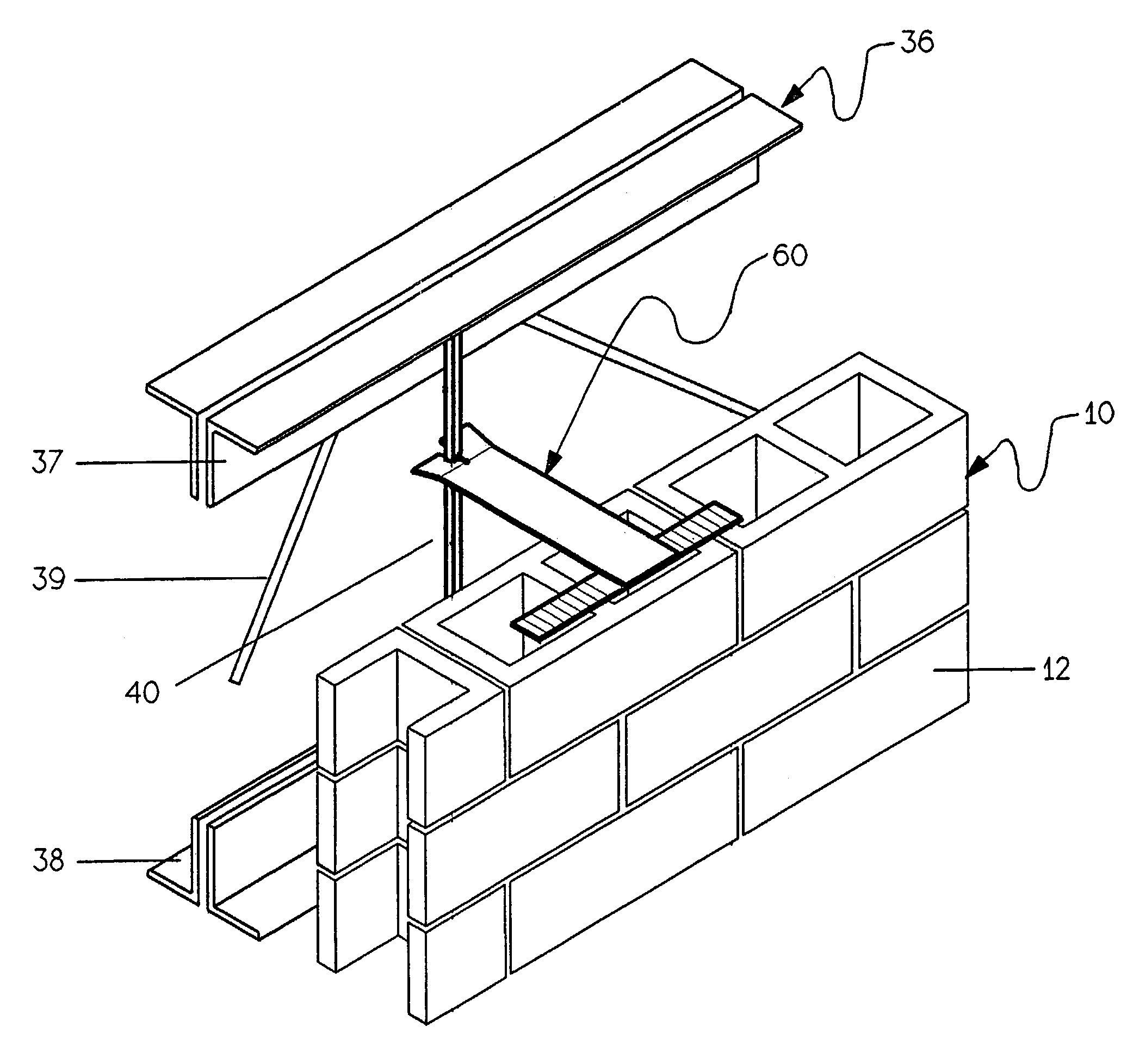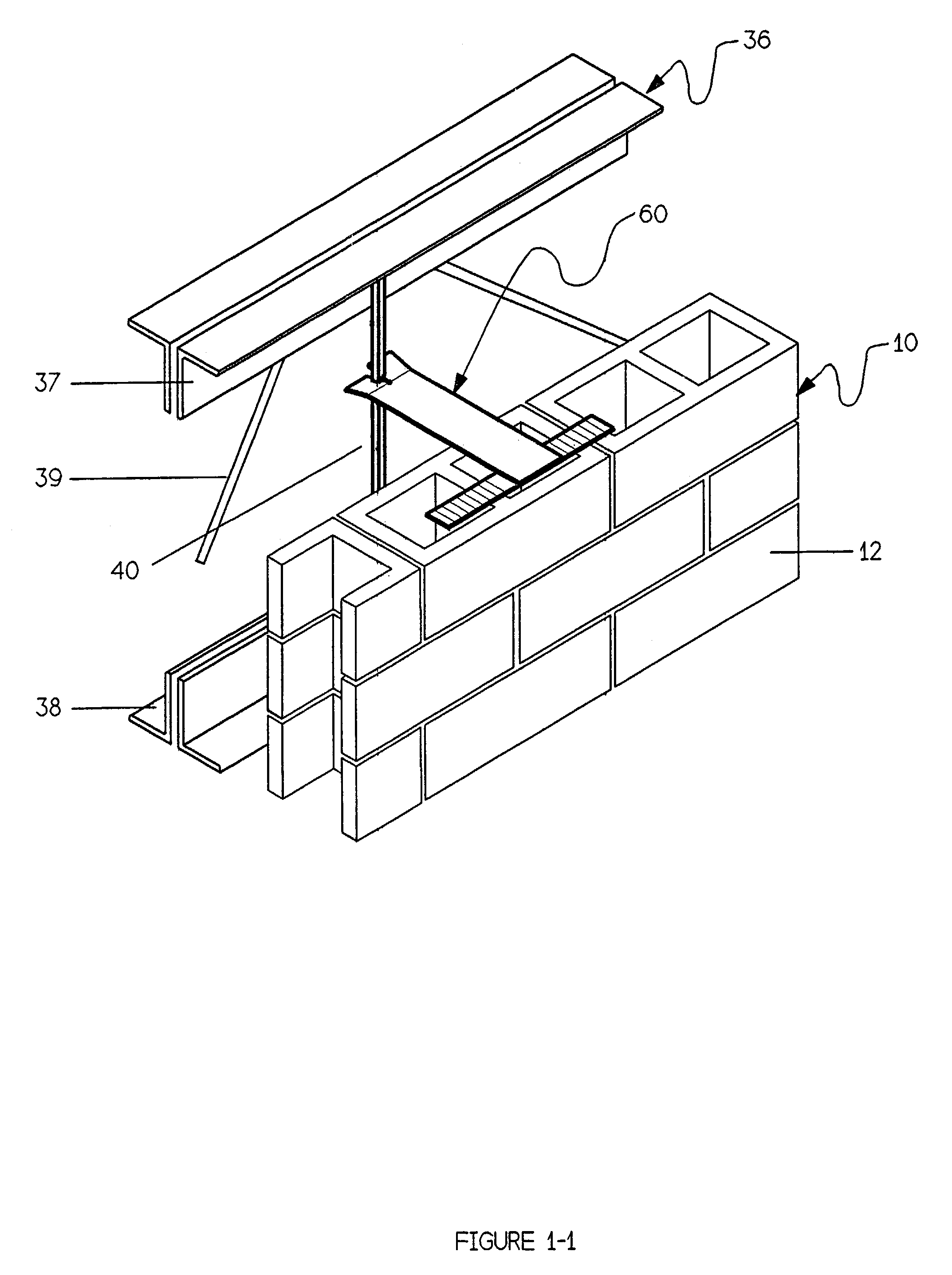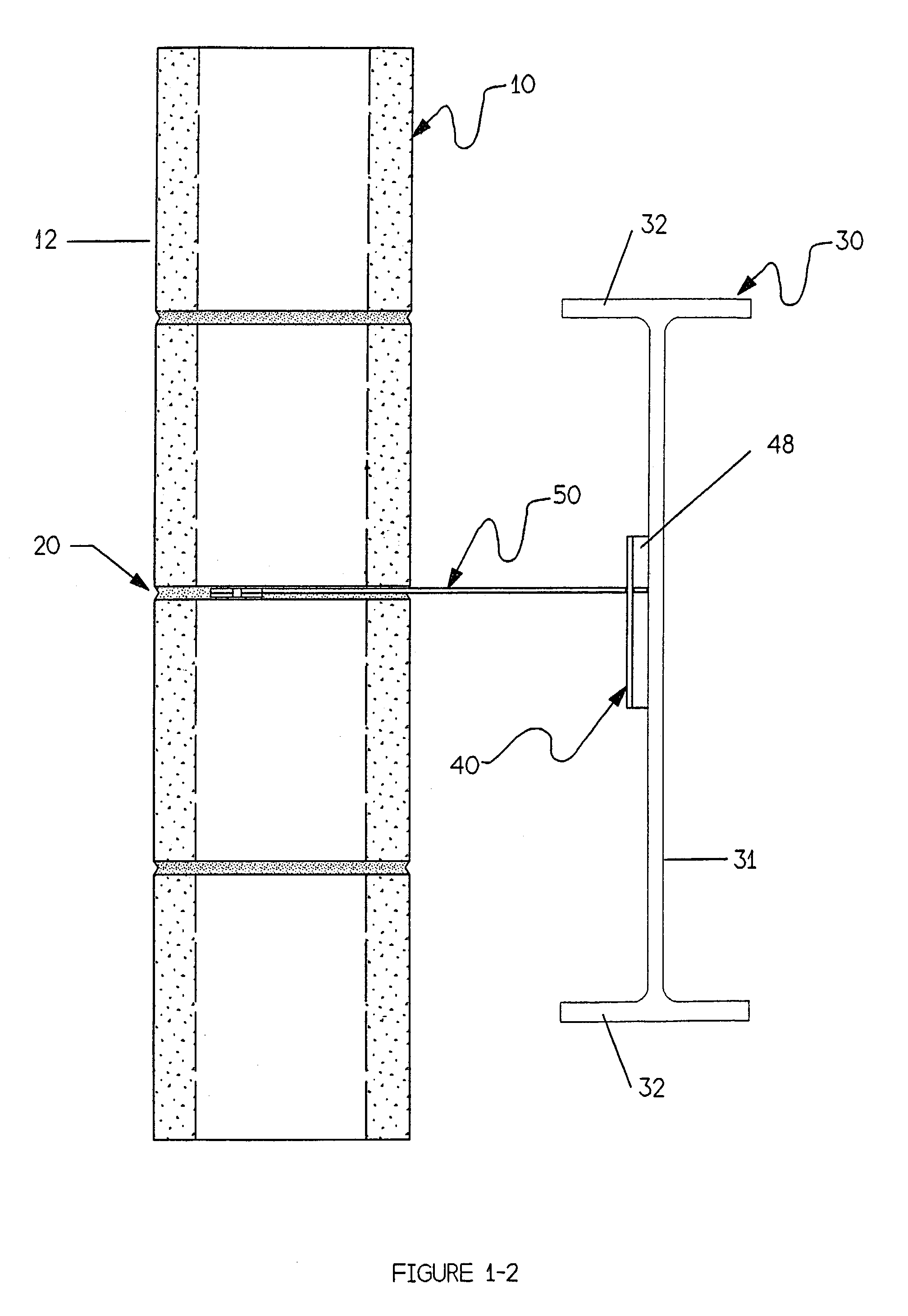Masonry connectors and twist-on hook and method
a technology of twist-on hooks and masonry connectors, which is applied in the direction of building components, building repairs, structural elements, etc., can solve the problems of affecting the progress of wall construction, and reducing the service life of connectors, so as to achieve the effect of reducing the force of
- Summary
- Abstract
- Description
- Claims
- Application Information
AI Technical Summary
Benefits of technology
Problems solved by technology
Method used
Image
Examples
examples
[0125]FIGS. 4-1 through 4-3 demonstrate examples of typical additional uses for embodiments of the present invention.
[0126]FIG. 4-1 illustrates using the “T-Connector” embodiment to join two walls, where the masonry connector of the present invention has several points of attachment with each cmu. FIG. 4-2 further illustrates using this embodiment to connect a masonry wall to a steel beam or truss which has a conventional channel 48.
[0127]The components of the masonry connector embodiments are preferably manufactured from steel plate or bar, which is either cut, bent, or molded to suit the particular embodiment. The steel can be of regular or high strength and can be plain finish, galvanized, stainless steel or any other finish. The hook and anchor bars can be flat or corrugated, they can have straight or serrated edges and punches or dimples, etc. to increase their bond in the mortar bed. The components of the present invention can also be manufactured from other non metallic mater...
PUM
 Login to View More
Login to View More Abstract
Description
Claims
Application Information
 Login to View More
Login to View More - R&D
- Intellectual Property
- Life Sciences
- Materials
- Tech Scout
- Unparalleled Data Quality
- Higher Quality Content
- 60% Fewer Hallucinations
Browse by: Latest US Patents, China's latest patents, Technical Efficacy Thesaurus, Application Domain, Technology Topic, Popular Technical Reports.
© 2025 PatSnap. All rights reserved.Legal|Privacy policy|Modern Slavery Act Transparency Statement|Sitemap|About US| Contact US: help@patsnap.com



